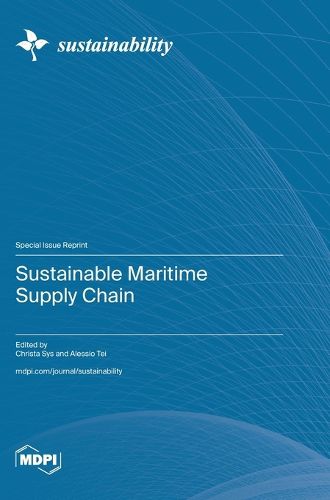Readings Newsletter
Become a Readings Member to make your shopping experience even easier.
Sign in or sign up for free!
You’re not far away from qualifying for FREE standard shipping within Australia
You’ve qualified for FREE standard shipping within Australia
The cart is loading…






This title is printed to order. This book may have been self-published. If so, we cannot guarantee the quality of the content. In the main most books will have gone through the editing process however some may not. We therefore suggest that you be aware of this before ordering this book. If in doubt check either the author or publisher’s details as we are unable to accept any returns unless they are faulty. Please contact us if you have any questions.
Moving toward a collaborative and cooperative maritime ecosystem has been a hot topic of discussion for a while, to the point that for maritime supply actors, co-innovation should now be the new normal. In order to manage the end-to-end integration of maritime supply chain processes, each stakeholder needs to control their maritime supply chain (i.e., reduce uncertainty) and create value (e.g., cost reduction) for every actor involved in the sustainable maritime ecosystem, with the aim of serving their customers better. Given this context, technological challenges (e.g., different standards, interoperability, cybersecurity, and energy consumption) must be faced from a logistic corridor point of view in order to guarantee the greatest advantages for all involved actors. A cooperative maritime system is a step toward creating a maritime supply chain ecosystem or network, but ad hoc initiatives should be replaced by more overarching strategies. Moving toward a collaborative and cooperative maritime sector is thus the next logical step for maritime supply chain actors in order to enable innovation and create a new competitive edge. From the industrial and economic perspectives, this trend of (maritime) actors banding together to form platform-enabled ecosystems can increase their strengths and competitiveness (Sys and Vanelslander, 2020). Thus, the implementation of a cooperative ecosystem is paramount in order to achieve the required sustainability goals.
$9.00 standard shipping within Australia
FREE standard shipping within Australia for orders over $100.00
Express & International shipping calculated at checkout
Stock availability can be subject to change without notice. We recommend calling the shop or contacting our online team to check availability of low stock items. Please see our Shopping Online page for more details.
This title is printed to order. This book may have been self-published. If so, we cannot guarantee the quality of the content. In the main most books will have gone through the editing process however some may not. We therefore suggest that you be aware of this before ordering this book. If in doubt check either the author or publisher’s details as we are unable to accept any returns unless they are faulty. Please contact us if you have any questions.
Moving toward a collaborative and cooperative maritime ecosystem has been a hot topic of discussion for a while, to the point that for maritime supply actors, co-innovation should now be the new normal. In order to manage the end-to-end integration of maritime supply chain processes, each stakeholder needs to control their maritime supply chain (i.e., reduce uncertainty) and create value (e.g., cost reduction) for every actor involved in the sustainable maritime ecosystem, with the aim of serving their customers better. Given this context, technological challenges (e.g., different standards, interoperability, cybersecurity, and energy consumption) must be faced from a logistic corridor point of view in order to guarantee the greatest advantages for all involved actors. A cooperative maritime system is a step toward creating a maritime supply chain ecosystem or network, but ad hoc initiatives should be replaced by more overarching strategies. Moving toward a collaborative and cooperative maritime sector is thus the next logical step for maritime supply chain actors in order to enable innovation and create a new competitive edge. From the industrial and economic perspectives, this trend of (maritime) actors banding together to form platform-enabled ecosystems can increase their strengths and competitiveness (Sys and Vanelslander, 2020). Thus, the implementation of a cooperative ecosystem is paramount in order to achieve the required sustainability goals.